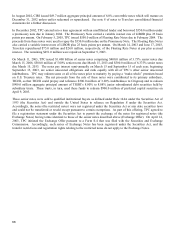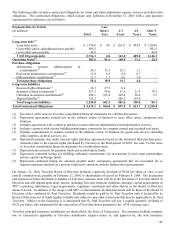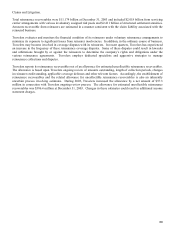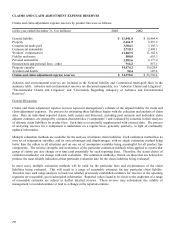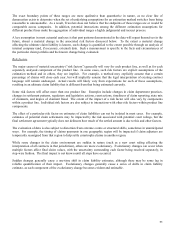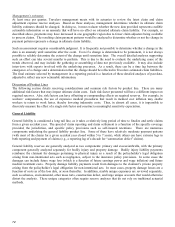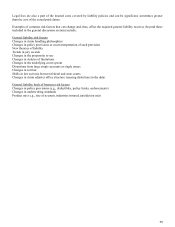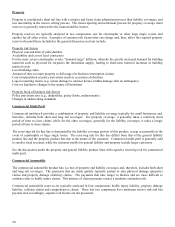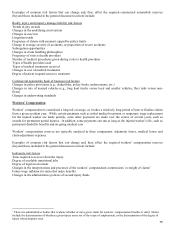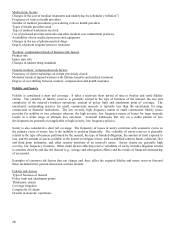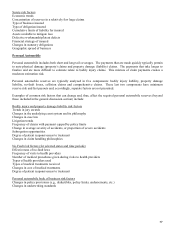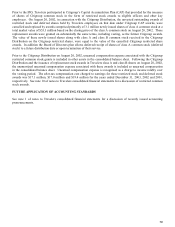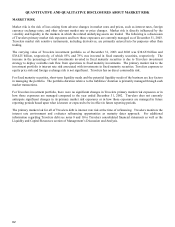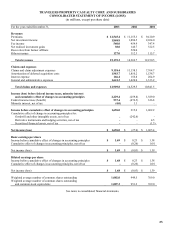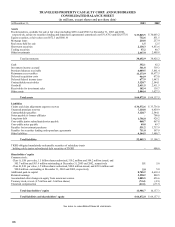Travelers 2003 Annual Report Download - page 78
Download and view the complete annual report
Please find page 78 of the 2003 Travelers annual report below. You can navigate through the pages in the report by either clicking on the pages listed below, or by using the keyword search tool below to find specific information within the annual report.
76
Medical risk factors
Changes in the cost of medical treatments and underlying fee schedules (“inflation”)
Frequency of visits to health providers
Number of medical procedures given during visits to health providers
Types of health providers used
Type of medical treatments received
Use of preferred provider networks and other medical cost containment practices
Availability of new medical processes and equipment
Changes in the use of pharmaceutical drugs
Degree of patient responsiveness to treatment
Workers’ compensation book of business risk factors
Product mix
Injury type mix
Changes in underwriting standards
General workers’ compensation risk factors
Frequency of claim reopenings on claims previously closed
Mortality trends of injured workers with lifetime benefits and medical treatment
Degree of cost shifting between workers’ compensation and health insurance
Fidelity and Surety
Fidelity is considered a short tail coverage. It takes a relatively short period of time to finalize and settle fidelity
claims. The volatility of fidelity reserves is generally related to the type of business of the insured, the size and
complexity of the insured’s business operations, amount of policy limit and attachment point of coverage. The
uncertainty surrounding reserves for small, commercial insureds is typically less than the uncertainty for large
commercial or financial institutions. The low severity, high frequency nature of small commercial fidelity losses
provides for stability in loss estimates whereas, the high severity, low frequency nature of losses for large insureds
results in a wider range of ultimate loss outcomes. Actuarial techniques that rely on a stable pattern of loss
development are generally not applicable to high severity, low frequency policies.
Surety is also considered a short tail coverage. The frequency of losses in surety correlates with economic cycles as
the primary cause of surety loss is the inability to perform financially. The volatility of surety reserves is generally
related to the type of business performed by the insured, the type of bonded obligation, the amount of limit exposed to
loss, and the amount of assets available to the insurer to mitigate losses, such as unbilled contract funds, collateral, first
and third party indemnity, and other security positions of an insured’s assets. Surety claims are generally high
severity, low frequency in nature. Other claim factors affecting reserve variability of surety includes litigation related
to amounts owed by and due the insured (e.g., salvage and subrogation efforts) and the results of financial restructuring
of an insured.
Examples of common risk factors that can change and, thus, affect the required fidelity and surety reserves (beyond
those included in the general discussion section) include:
Fidelity risk factors
Type of business of insured
Policy limit and attachment points
Third-party claims
Coverage litigation
Complexity of claims
Growth in insureds’ operations


